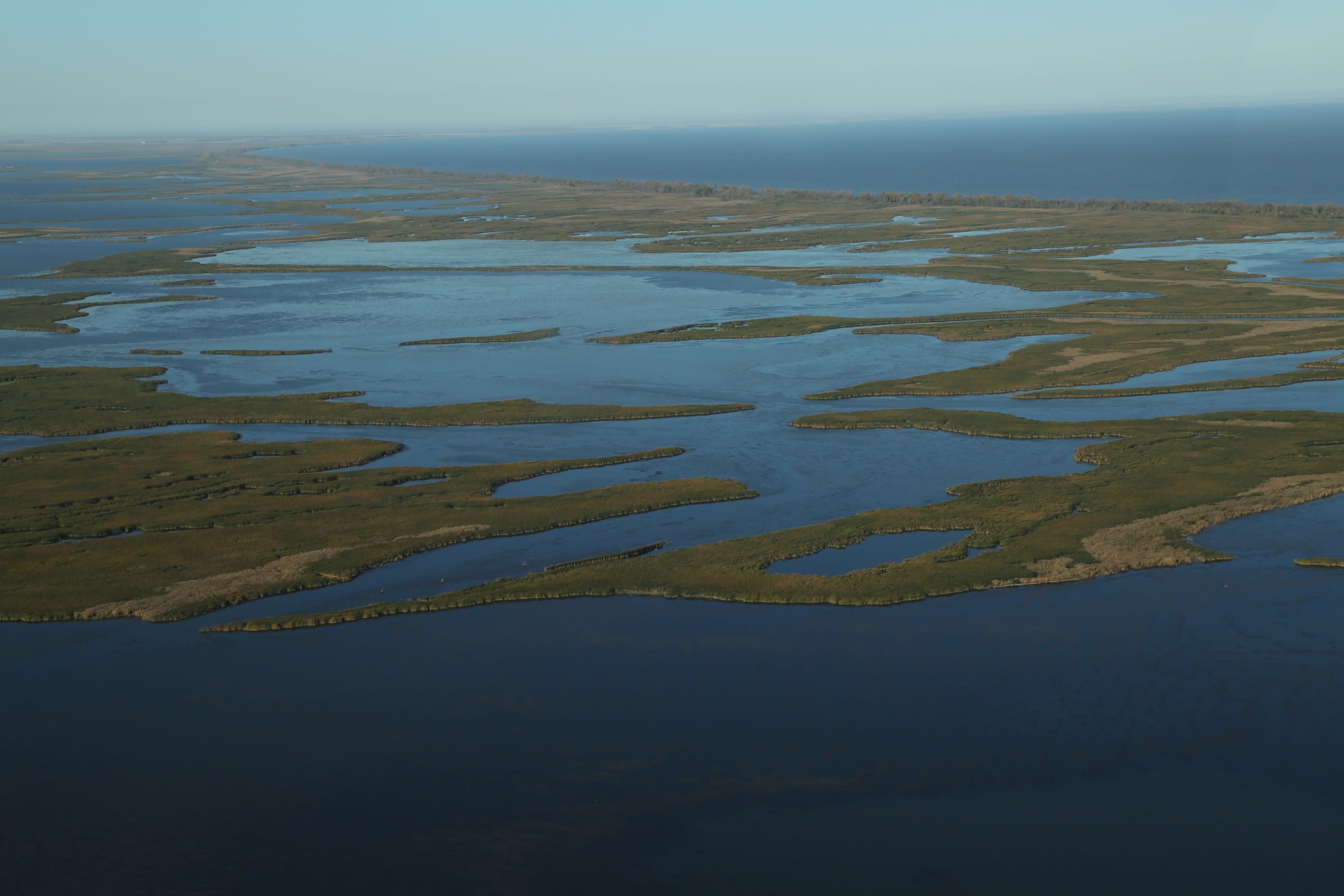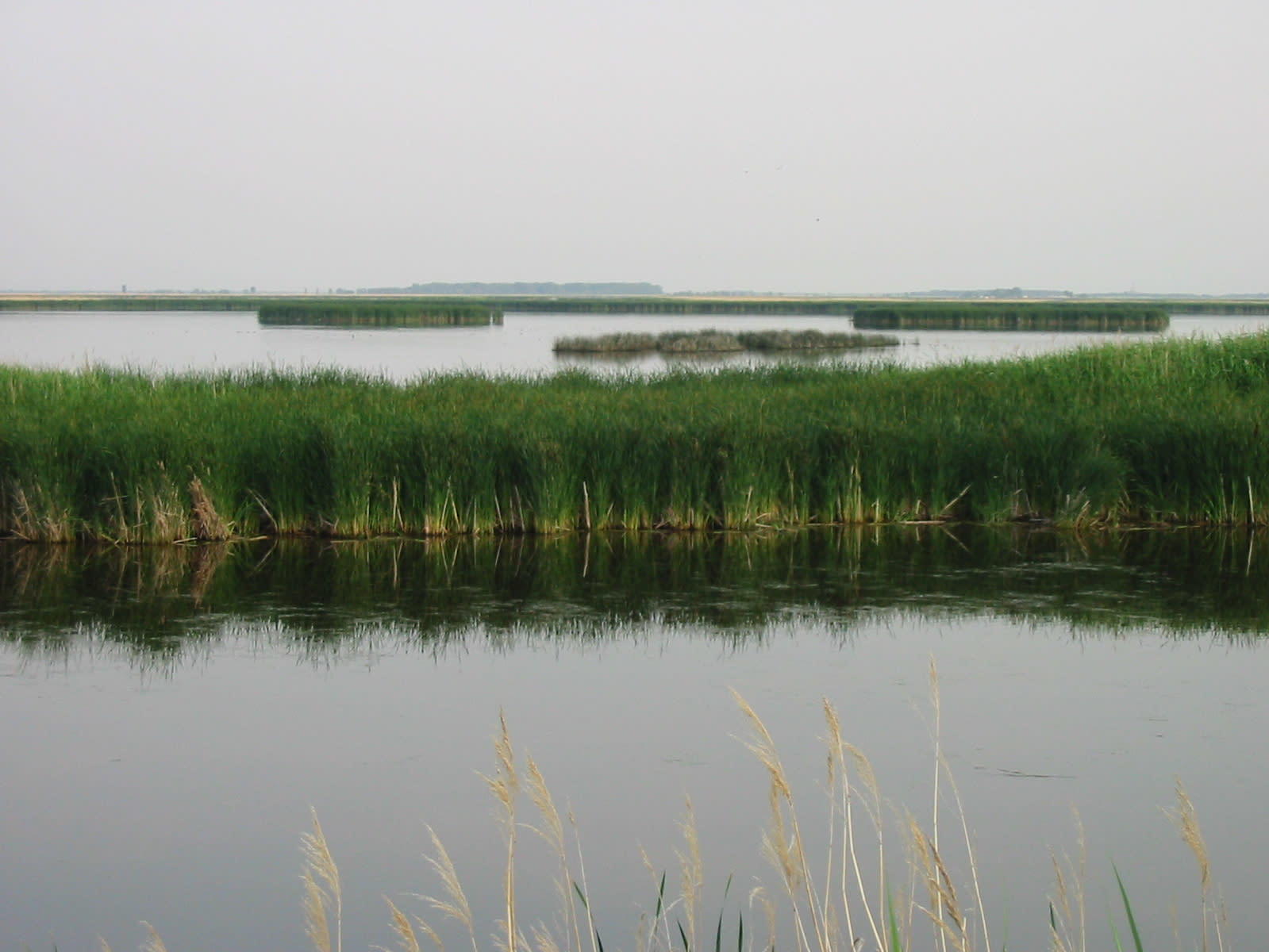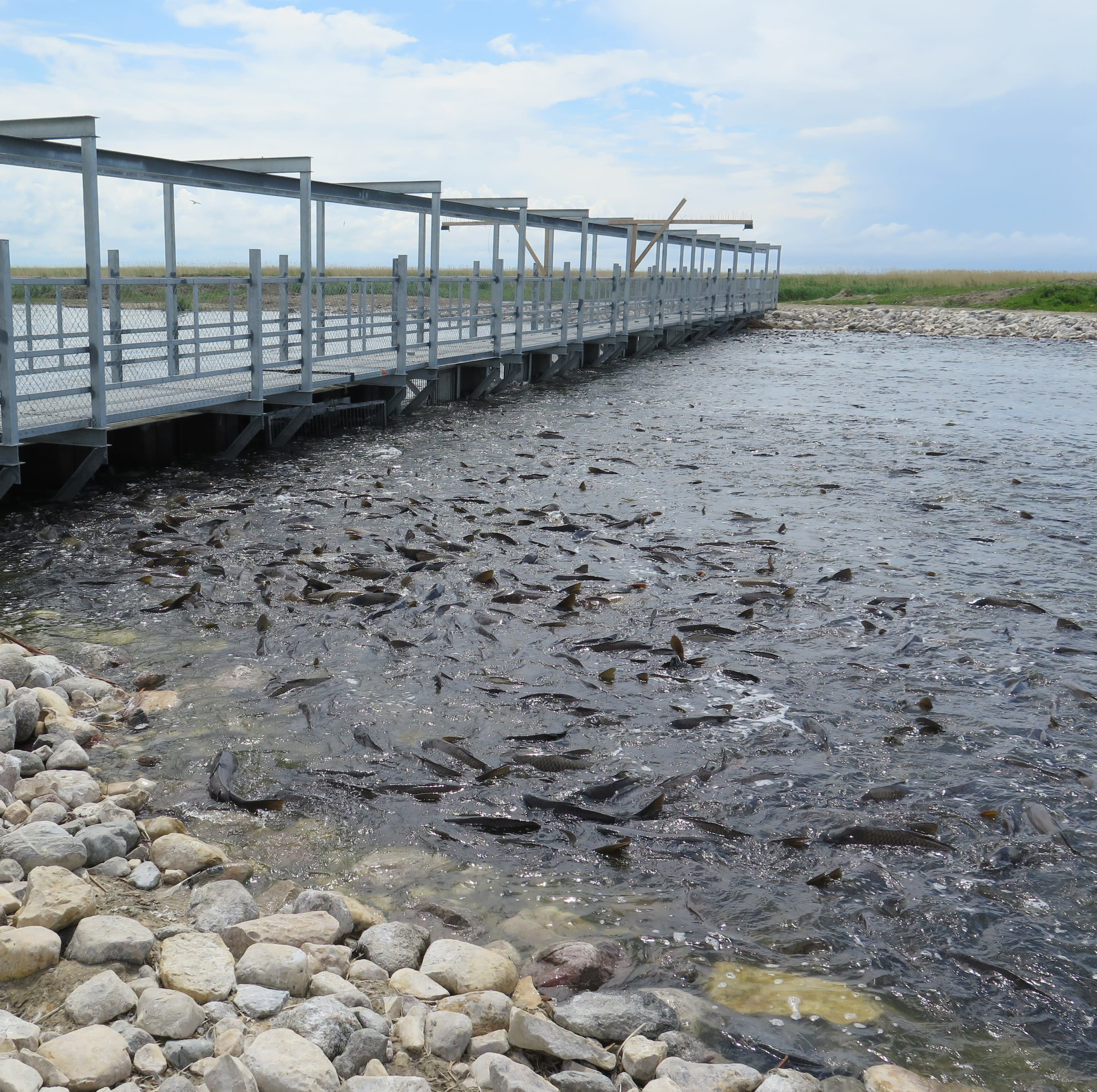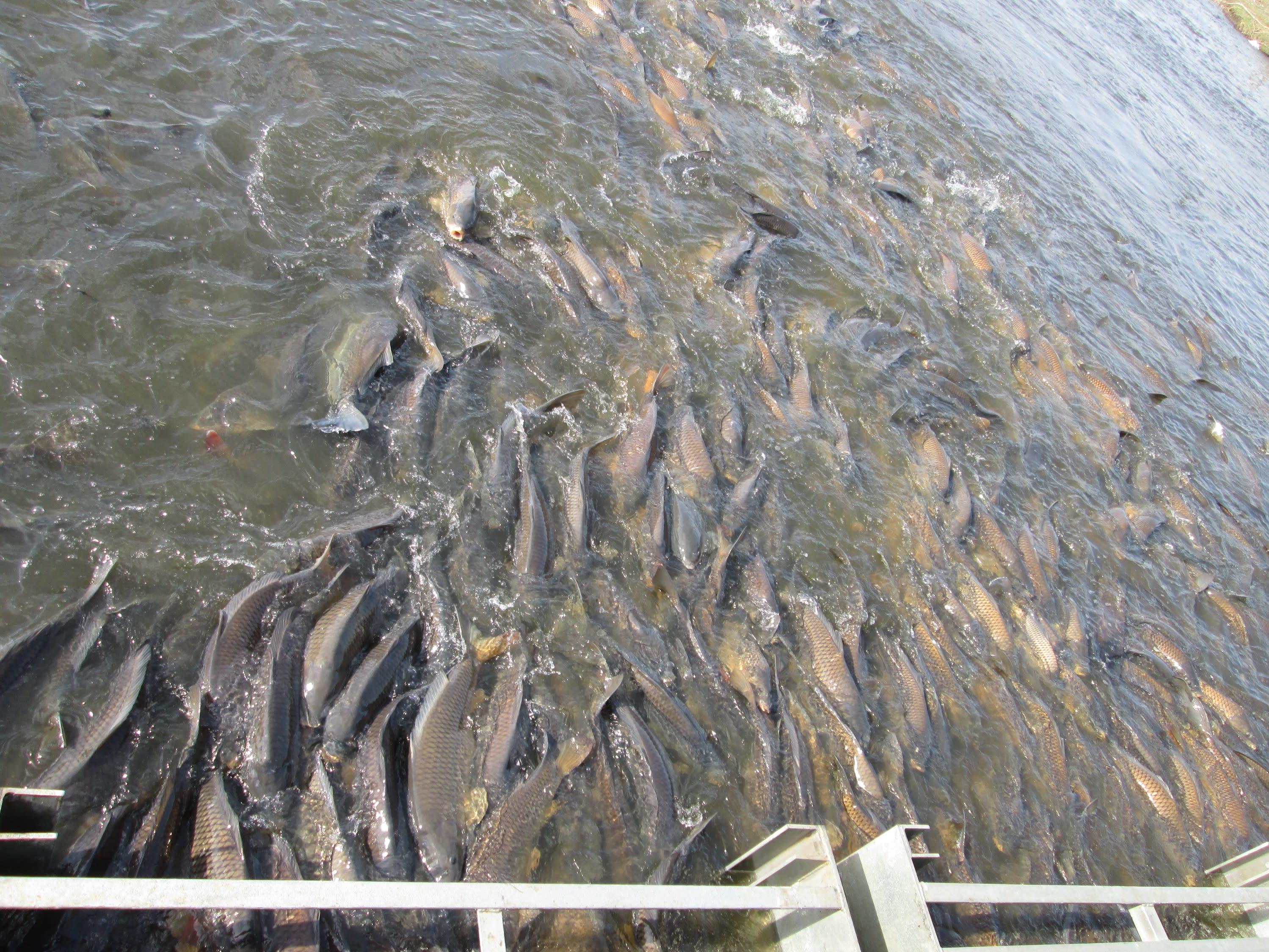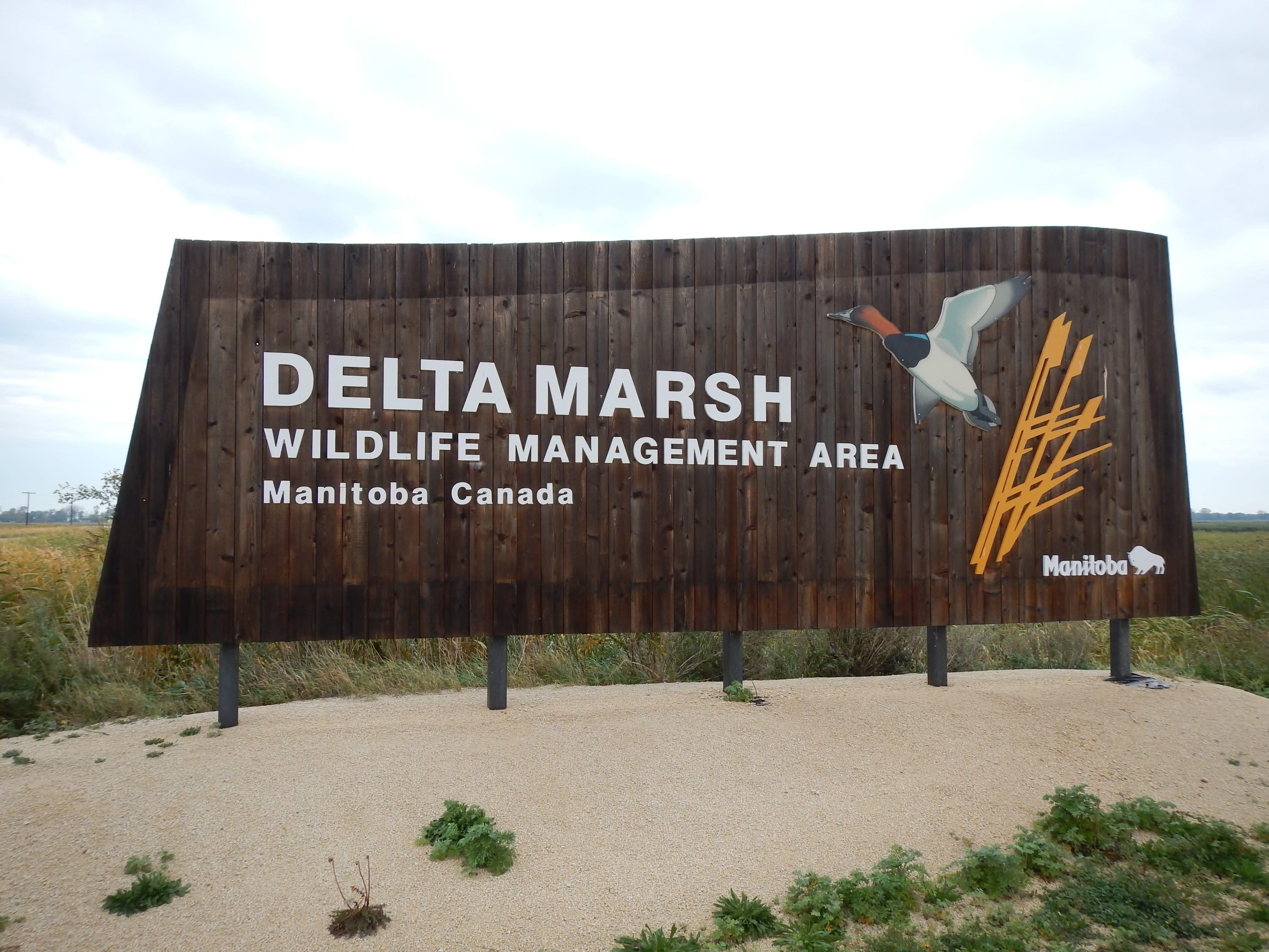
Delta Marsh
Categories
Canada
About
Current and Future Threats: There are many threats facing Delta Marsh. Due to the marsh’s proximity to the Portage Diversion outlet, the marsh periodically floods, impacting vegetation growth, and adding sediment and nutrient pollution. Due to Lake Manitoba’s water levels being stabilized for flood mitigation, much of the wetland has become a series of large shallow lakes. The beach ridge is also under pressure of further development of its land for cottages. Finally, invasive species have caused damage to the marsh’s biodiversity. Common carp have caused severe damage to the Delta Marsh ecosystem. Carp are bottom feeders which sift through sediment with their mouths in search of food. This suspends sediments, preventing the sun from penetrating the water. Low light prevents aquatic plants from growing, eventually decreasing biodiversity. Fortunately, Ducks Unlimited Canada, in partnership with Manitoba Agriculture and Resource Development and private stakeholders, has built exclusion screens and dikes to prevent carp from migrating into the marsh each spring. Delta Marsh has also been invaded by Typha x glauca, a hybrid of the narrow-leaved (Typha angustifolia) and broad-leaved cattail (Typha latifolia). This cattail is able to outcompete native marsh vegetation because it can thrive in both high and low water.
Adjacent Land Use: Surface Water. Delta Marsh is bordered on the south side by agricultural and pasture land and bordered by cottages on the beach ridge to the north.
Criteria:
- Currently a Ramsar Site
- Supports significant numbers of wetland-dependent fauna, such as water birds or fish
- Protects biological diverse wetland flora, fauna and/or their habitat
Delta Marsh is one of North America’s largest freshwater coastal wetlands. First Nations people utilized the marsh’s abundant flora and fauna for thousands of years, as evidenced by spear and arrow heads that wash up on the beach. In the early 20th century Delta Marsh became a world famous duck hunting location, a place where the rich and famous would come to hunt. Cottages were also built overlooking the lake as the beach ridge separating the marsh from Lake Manitoba became a popular recreation spot. By the 1960s, environmentalists and hunters noticed a severe drop in the duck populations as well as other negative changes to the environment. This, along with changing tastes in recreation, caused hunting to crash in popularity. Research by Ducks Unlimited Canada, in cooperation with the University of Manitoba Delta Marsh Field Station and other partners, discovered that invasive common carp (Cyprinus carpio) was one of the main contributors to the environmental decline, along with stabilized water levels, and nutrient loading. In 2006, much of the marsh was designated a Wildlife Management Area by the province of Manitoba.
The marsh was the home of two important field stations. The Delta Waterfowl Research Station was established in 1938, and the University of Manitoba Delta Marsh Field Station in 1966. Both stations hosted a variety of wetland and education activities, including university students and their research, conferences, seminars and school field trips. Unfortunately, both stations were damaged during a flood in 2011. The university field station closed, and while the waterfowl station also sustained damage, it still hosts some research activities.
Delta Marsh is one of the most distinct wetlands in Canada, boasting 307 species of birds, 360 plant species, as well as 31 species of fish. The marsh is an Important Bird Area according to IBA Canada, due to the thousands of waterfowl, shorebirds, songbirds, and gulls that use the marsh to breed or as a staging area during migration. The marsh was also part of the provincial Heritage Marsh Program before the program was discontinued. Delta Marsh being recognized as a Wetland of Distinction would draw attention to the many challenges facing this important habitat.
- Aesthetic/cultural heritage value/provisioning
- Recreation (birdwatching, ecotourism)
- Education/Research
- Water quality improvement
- Coastal Open Fresh Water
- Lake
FLORA AND FAUNA
Dominant flora: Delta Marsh’s vegetation includes: Broadleaf cattail (Typha latifolia), Narrow-leaved cattail (Typha angustifolia), Hybrid cattail (Typha x glauca), Common Reed (Phragmites australis), Whitetop (Scolochloa festucacea), Sago Pondweed (Stuckenia pectinata), Northern Watermilfoil (Myriophyllum sibiricum), and Sheathed Pondweed (Stuckenia vaginata).
Unique flora: Common hackberry (Celtis occidentalis) – most northerly extent of this tree species is found on the beach ridge.
Rare fauna: None.
Images

